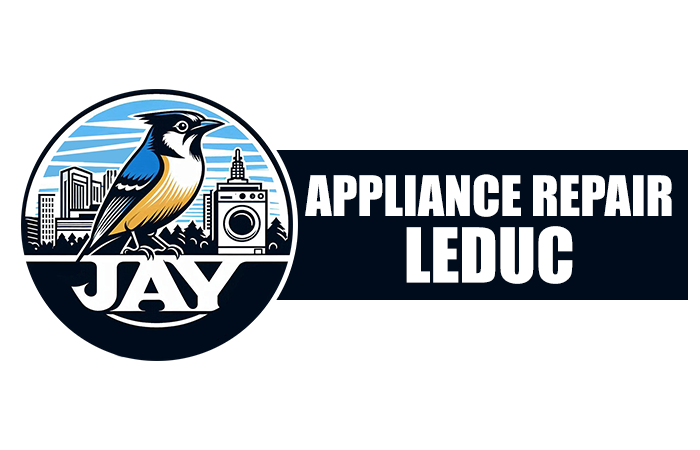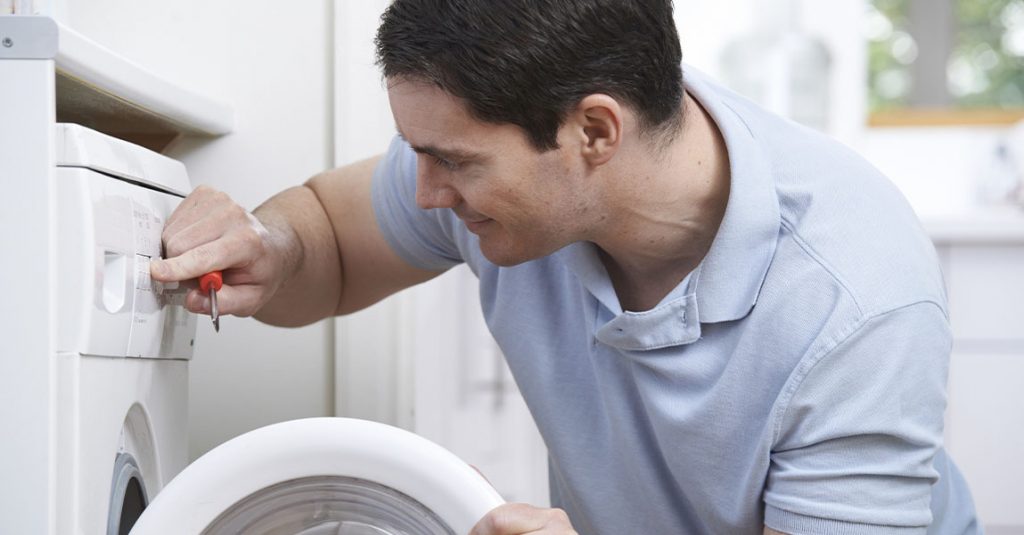When a dryer takes much longer than usual to finish a load, one of the first components we look at is the exhaust duct. The exhaust duct is critical to pushing moist air out of the appliance and away from your laundry space. In other words, this part of your dryer is responsible for removing the damp air so clothes can dry efficiently.
However, when the exhaust duct is blocked, moist air can’t escape as it should. Consequently, the dryer continues running far longer than necessary while still delivering poor drying performance. That’s why we begin each inspection by evaluating airflow through the system.
We often see problems caused by lint buildup deep in the venting. Further, crushed hoses or nests from outdoor animals can be just as damaging. These issues must be cleared before testing any other dryer part.
Warning Signs of a Clogged Dryer Duct
Blocked exhaust ducts rarely go unnoticed if you know what to look for. Firstly, your dryer will seem hot to the touch after each cycle, which is not typical. Secondly, your clothes might feel unusually warm yet still damp at the end of drying. Both signals point to airflow restriction.
A burning smell is another major red flag. That is to say, lint buildup not only restricts airflow but also creates a significant fire risk. We always advise unplugging the appliance immediately if there’s a strong odor of overheating or smoke.
Another warning is excess condensation in the laundry room. For example, if your windows fog up during a drying cycle, moist air may be venting inside your home instead of outdoors. Our team takes these issues seriously and addresses them before further damage occurs.
The Drying Process and Why Airflow Matters
Dryers operate by heating air and circulating it through tumbling clothes, then pushing the damp air out through the exhaust duct. Therefore, the effectiveness of this cycle depends on unrestricted airflow from start to finish. When the air is trapped, drying time increases dramatically.
Similarly, heat builds up inside the drum because it has nowhere else to go. This added strain can affect internal components such as the heating element and thermal fuse. In short, poor venting leads to more than just inconvenience—it can shorten your dryer’s life.
For this reason, we always prioritize airflow testing. During a service call, we check both internal ducts and external vent caps for signs of blockage or damage. If airflow is restricted, it doesn’t matter how strong the heating element is.
How We Inspect and Clean Dryer Ducts
Our diagnostic approach begins with disconnecting the dryer to gain access to the rear exhaust area. After that, we remove the vent hose and test for air movement using handheld equipment. Weak output typically confirms that an obstruction is present.
Once identified, we use long, flexible brushes to sweep the entire duct length. Most importantly, we inspect the exterior vent flap to ensure it opens properly. If the flap is stuck closed or blocked by debris, airflow is still compromised.
Additionally, we often recommend cleaning the entire path—not just the immediate hose. For instance, if lint has traveled into wall ducts or through several turns in the venting, deeper cleaning is needed. This is where professional service can prevent repeated issues.
Electrical and Thermal Consequences of a Clogged Duct
Blocked ducts lead to more than delayed drying. They also impact key electrical and thermal parts inside the machine. For instance, the thermal fuse is designed to cut power if the internal temperature rises too high. Therefore, clogs often cause this part to fail.
We’ve seen countless dryers with blown thermal fuses that were actually symptoms of long-term duct obstruction. Likewise, the heating element itself may overwork and eventually burn out. That’s why we recommend resolving the root issue first before replacing any components.
If your dryer has already stopped working, and you suspect a heat-related failure, one of the first steps should be airflow testing. You can learn more about this through dryer repair services in Leduc. Our technicians will identify and correct the source of the airflow restriction.
The Importance of Regular Maintenance
To prevent future problems, we recommend cleaning the entire dryer vent system at least once a year. This includes the lint trap, internal ducts, and the external vent hood. Above all, we emphasize safety. Lint is highly flammable, and restricted ducts are among the leading causes of dryer fires.
Moreover, annual maintenance improves efficiency. For instance, unrestricted dryers complete cycles faster and use less energy. In addition, proper airflow reduces the wear on your appliance’s motor and heating elements.
We’ve seen homeowners overlook this for years, only to face breakdowns that could have been prevented. Fortunately, proper servicing makes a big difference in long-term performance.
Unusual Issues That Can Mimic Duct Blockage
Not all drying problems are caused by blocked ducts. However, they remain the most common culprit. Occasionally, a faulty moisture sensor or thermostat may lead the appliance to behave as if airflow is restricted. To clarify, the dryer may shut off early or continue running long past the end of a cycle.
In such cases, our team looks deeper. For instance, we test the moisture sensor and verify whether it’s responding correctly to damp laundry. Likewise, we confirm that the control board is receiving accurate temperature feedback. If not, these parts may require replacement.
Still, in 8 out of 10 service calls related to long drying times, airflow is the issue. That’s why we always begin with a full vent inspection before considering internal faults. If the source is unclear, dryer repair in Leduc is a solid next step for in-depth testing and correction.
Why DIY Cleaning Often Falls Short
We understand why homeowners often try to handle dryer duct cleaning themselves. However, standard home tools are usually too short or rigid to reach deep obstructions. Moreover, without removing the dryer and testing airflow properly, it’s easy to overlook partial blockages.
For example, lint may be compacted in a corner of the vent behind the wall. In such cases, simply cleaning the hose won’t improve airflow. Similarly, birds or rodents sometimes build nests at the exit point, causing invisible but severe blockage.
That’s why we recommend having a professional inspect and clean the entire duct path every year. JAY Appliance Repair handles this process efficiently and with minimal disruption to your home.
Long-Term Risks of Ignoring Duct Obstructions
The longer you ignore a blocked exhaust duct, the greater the risk of damage—not just to the dryer, but to your entire home. Firstly, the risk of electrical fires rises with every cycle. Secondly, increased heat can affect surrounding drywall or floor material.
In addition, your utility bills may increase noticeably. The dryer will run longer to achieve the same results, consuming more power. Similarly, other appliances near the heat may suffer accelerated wear.
That’s why we don’t recommend postponing service. Airflow issues should be addressed early, especially when any of the warning signs are present. If you’re unsure whether a blockage exists, appliance repair experts in Leduc can help confirm the problem and resolve it promptly.
When to Replace vs. Repair
If the duct has collapsed or suffered physical damage beyond cleaning, replacement is usually the best option. Likewise, if the thermal fuse or heating element has failed more than once, deeper investigation is required. These failures are often symptoms rather than isolated malfunctions.
However, most cases don’t require major replacement. In fact, once airflow is restored, the dryer usually resumes normal operation. That’s why a full cleaning and inspection should always be the first step before considering a new unit.
When our team from JAY Appliance Repair evaluates these situations, we focus on cost-effective solutions. Our goal is to extend the life of your appliance wherever possible.
Final Thoughts on Addressing Dryer Vent Issues
Dryers that run too long are more than just a nuisance. As a result of poor airflow, they waste energy, wear down faster, and present real safety concerns. Therefore, a blocked exhaust duct should never be ignored.
Regular cleaning, thorough inspection, and professional servicing keep your machine running smoothly. Our team emphasizes safety and efficiency above all. If you’re experiencing these symptoms, don’t wait for a complete breakdown to act.
For expert solutions in airflow issues and more, contact a dryer repair technician in Leduc to get started with a proper assessment. At JAY Appliance Repair, we’ve seen how critical venting problems are—and we’re ready to help.
FAQs
Why does my dryer feel hot but clothes are still damp?
This usually indicates restricted airflow. When moist air can’t escape, the dryer overheats but fails to remove moisture from clothing.
How often should I clean my dryer vent?
Once a year is recommended, but more frequently if you dry heavy loads often or notice performance changes.
Can a blocked vent damage other parts of the dryer?
Yes, excessive heat can cause thermal fuses to blow and heating elements to wear out faster than normal.
Are there signs of a blockage before the dryer stops working?
Yes, signs include long drying times, hot surfaces, burning smells, or humidity in the room.
Is it safe to clean the vent myself?
Basic lint trap cleaning is fine, but full duct cleaning is best handled by professionals with the right tools.

